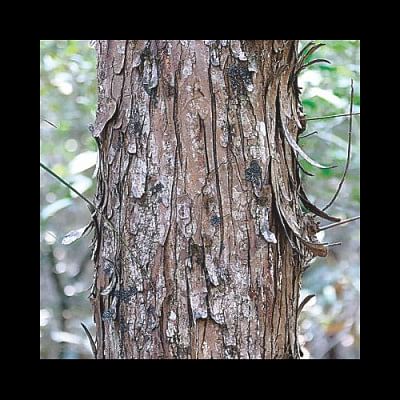Plants of Sundarban

I am visiting Sundarban and, as always, its plants amaze and confound me. How do they survive in this harsh unfriendly environment dominated by saline water and inundated by tides twice daily? How can I learn to identify these plants which are different from those of mainland Bangladesh?
Searching for answers, I meet with Professor Mahmood Hossain of Khulna University, who points out that adaptation is the key that enables trees to survive in these difficult conditions. One of his research topics is Sundarban's ecosystem and how it functions. Dr. Hossain identifies roots as an important device for adaptation. On Sundarban's floor, roots protrude from the ground in varying pointed shapes. They remain over water when tides inundate the land, thus helping the trees breathe. Other examples of adaptation include seeds that germinate while attached to the tree. Rapid rooting takes place once they fall, before the tides can wash them away. On yet other trees, aerial roots grow sideways from the trunk – at heights of six feet or more - and absorb oxygen.
Dr. Hossain mentions retranslocation as a way some plants deal with salinity. Living in saline water, many plants end up absorbing excess sodium. This interferes with other nutrients, so the plants send unwanted sodium into selected leaves and drop them. However, they extract useful nutrients from these leaves beforehand.
On the beach at Kotka, I see rows of roundish black objects with a hook-like extension. These are seeds of Sundari trees. Their strange shape, similar to a boat's hull, allows them to float freely and quickly in the water. I see no Sundari tree nearby and conclude these seeds have spread far to give birth to new trees - another adaptation at work.
Back in the forest, I face another challenge. As in every other visit I struggle to recognize and identify the trees.
When I first came to Sundarban, I was already familiar with the important flora of mainland Bangladesh. But here grew plants that were seen nowhere else in the country. They had exotic names to match: Sundari, of course, but Keora, Gewa, Baen, Possur, Goran, Golpata, Hargoza, Amur, Jhanna, Kakra, Khoilsa, Soila,... It is a long list.
Easiest to identify is Golpata, the trunkless palm tree with its leaves growing directly from the ground. Keora trees are distinctive because their leaves are slimmer than others and they droop, creating a soft visual texture. Gewa has shiny leaves, some of which can be wholly or partly red. Jhanna and Kakra are problematic: looking similar, both have angled knee-shaped roots, but leaves of the former are slimmer, while the latter's leaves are more rounded. I learn to tell Possur from the peeling bark on its trunks. Hargoza with its thorny leaves is easy, but I have trouble identifying Baen until I learn to look for its gracefully curved beige trunk. Soila - or Ora - always seems to be fruiting, and its fruit is easily identified. Khoilsa, which yields the best honey, I can only identify from the flower.
And Sundari? I recognize it – after much effort - from a combination of its bluntly pointed roots, buttressed trunks, smaller deep green leaves and bark creased with vertical lines.
There is much to learn from Sundarban, and it is not all academic. For example, discoveries may help with climate change. As nature on our home planet appears under siege, Sundarban may yet provide us answers to vital questions. Therefore, the work of scientists such as Dr. Hossain is invaluable and deserves our support.
www.facebook.com/ikabirphotographs or follow ihtishamkabir on Instagram

 For all latest news, follow The Daily Star's Google News channel.
For all latest news, follow The Daily Star's Google News channel. 



Comments